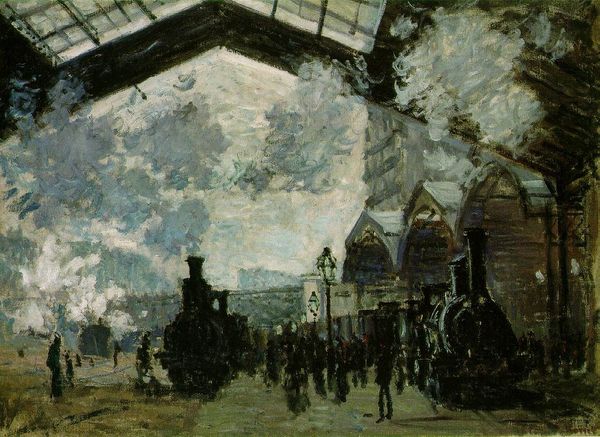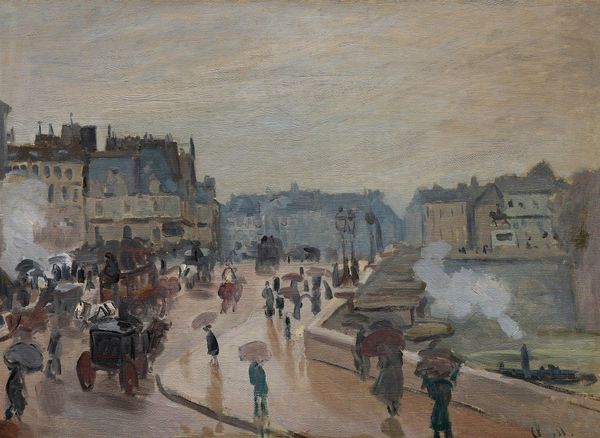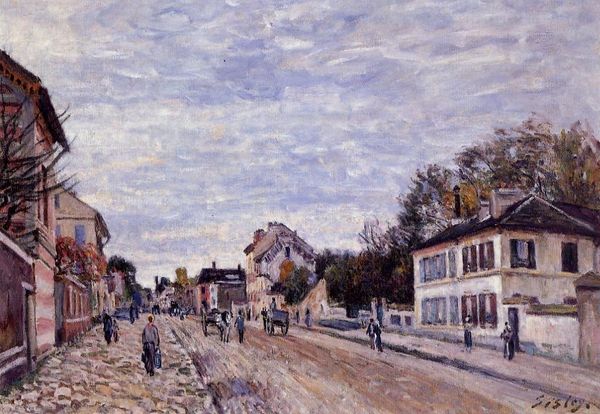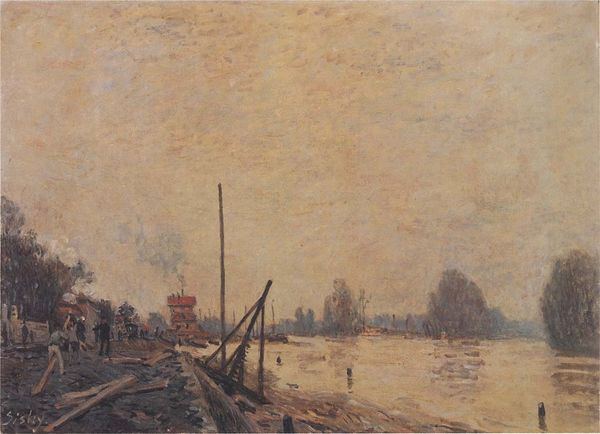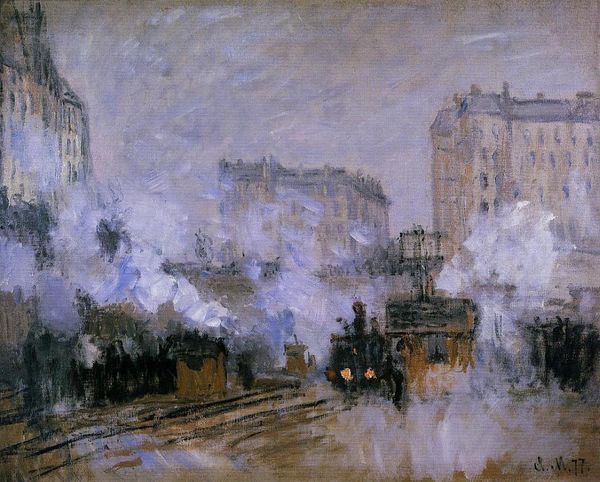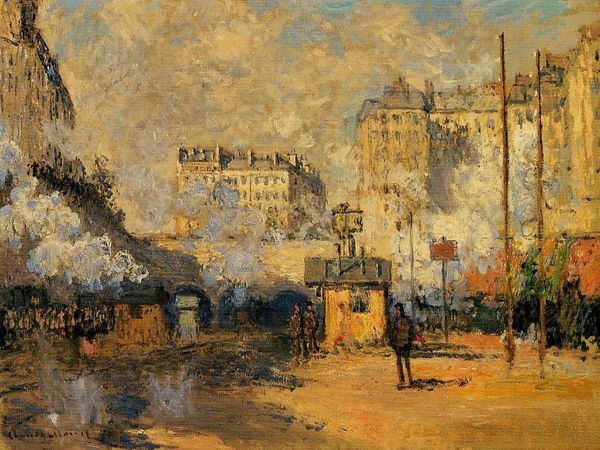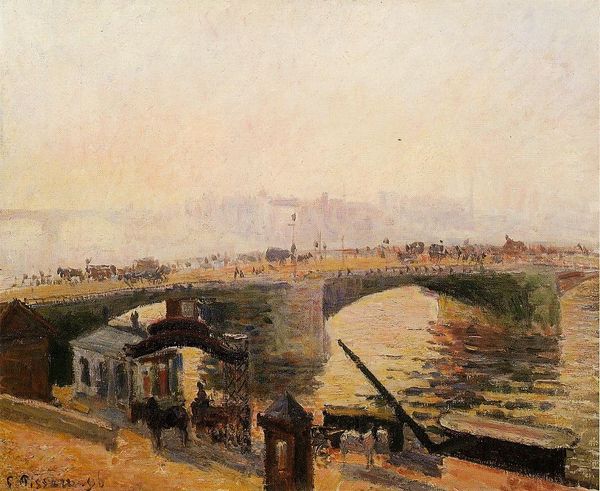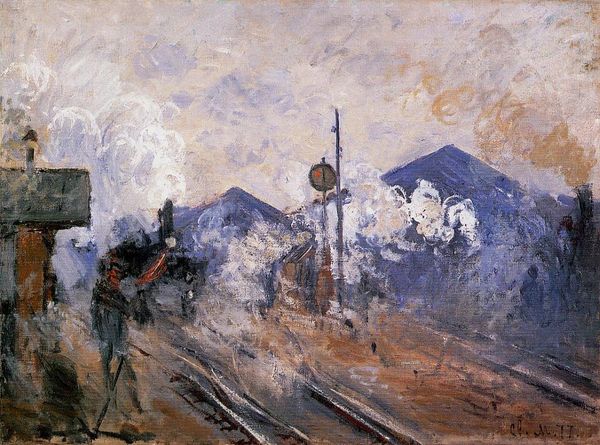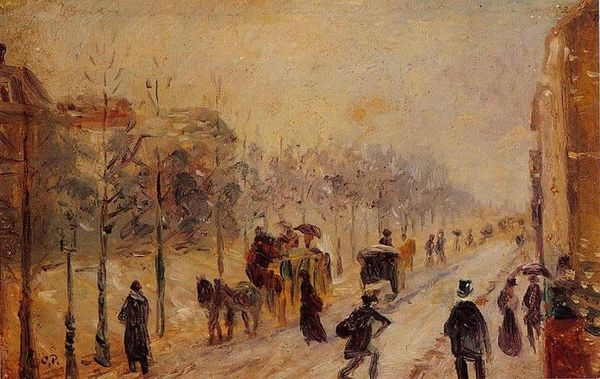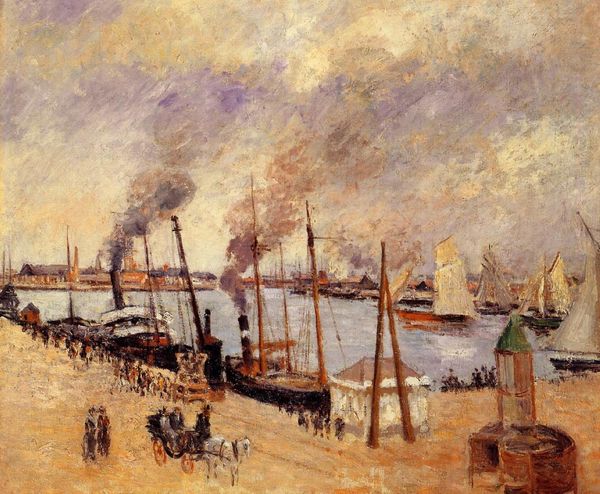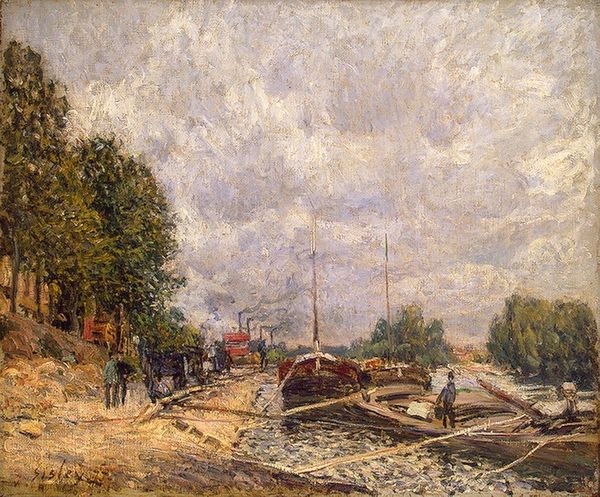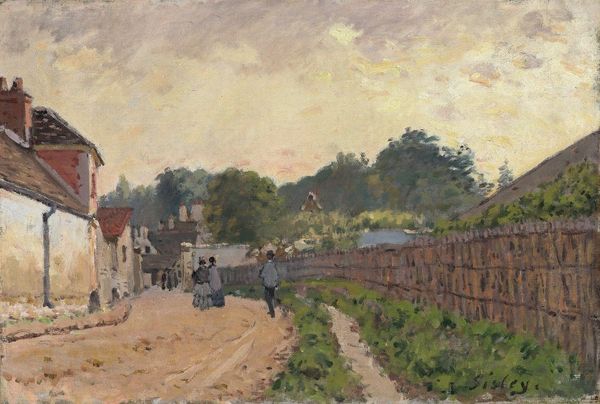
painting, oil-paint
#
sky
#
painting
#
impressionism
#
oil-paint
#
landscape
#
impressionist landscape
#
oil painting
#
cityscape
#
genre-painting
#
modernism
Copyright: Public domain
Editor: This is Claude Monet's "Saint-Lazare Station, the Western Region Goods Sheds," painted in 1877. It's an oil painting, and I'm immediately struck by how the steam and smoke seem to dissolve the architecture. It feels so ephemeral, almost like a memory of a train station. What do you make of it? Curator: Monet's series on the Saint-Lazare station is fascinating in how it intersects with the social and technological shifts of late 19th century Paris. Train stations weren't just transportation hubs, but symbols of modernity and industrial power. Why do you think Monet chose to paint the *goods* sheds rather than the more traditionally "picturesque" aspects of travel? Editor: That's a great question. Maybe he wanted to capture the working life of the city, rather than romanticized departures or arrivals? The labor involved in the goods moving throughout Paris, perhaps? Curator: Precisely! He wasn't just painting a pretty picture; he was depicting the machinery of modern life and its effect on the environment. Consider how the steam blurs the distinction between the natural sky and the industrial station, creating a sense of both wonder and unease. How did showing something as new as a train station impact the role of painting at the time? Editor: It made painting a tool for understanding the present. Instead of depicting historical scenes, Monet depicted everyday contemporary experience, validating it as a worthy subject. It showed how art can be a mirror to society. Curator: Exactly. And by doing so, he also helped redefine what "art" could be, legitimizing the representation of industrial subjects within the fine art world, forever changing what kind of imagery might be seen as important to preserve, study and exhibit in institutions like ours. Editor: It's incredible how much a painting of a train station can tell us about the society that produced it. Thanks!
Comments
No comments
Be the first to comment and join the conversation on the ultimate creative platform.
